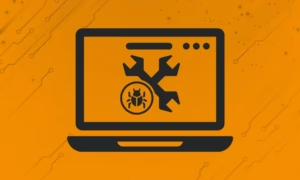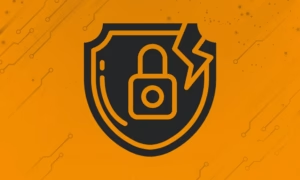In today’s digital world, keeping your software updated isn’t just a recommendation — it’s one of the easiest and most effective ways to protect your business. Whether you’re running a small office or managing a growing team, outdated systems can open the door to cyber threats, slow down performance, and even lead to compliance issues. At Advanced IT Support, we help businesses like yours stay safe, secure, and stress-free through smart, reliable update management.
This article explains why updates are so important, what can happen when you delay them, and how we support your business with practical, proactive solutions.

What Are Software Updates?
Software updates are routine changes made to your apps or systems by developers. These changes help fix bugs, improve speed, close security gaps, and keep things running smoothly. Common types of updates include:
- Security patches: Prevent cyber threats by fixing known vulnerabilities
- Bug fixes: Resolve errors that may cause crashes or slow performance
- Feature upgrades: Add helpful new tools or improve the user experience
- Compatibility updates: Ensure your software works well with newer devices or programs
Putting off updates can lead to serious issues — something we help our clients avoid every day through structured, automatic patching and monitoring.
How Software Updates Keep Your Business Secure
Hackers often look for weak points in software, and outdated systems are one of the easiest targets. That’s why software vendors regularly release security updates to address known vulnerabilities. According to the National Institute of Standards and Technology (NIST), timely patching is essential to limiting your risk exposure.
Harvard’s Berkman Klein Center also notes that many data breaches happen because known issues weren’t patched in time. The takeaway? The sooner you update, the safer your systems are.
Our team at Advanced IT Support makes sure your updates are installed promptly and properly, without causing disruptions to your day-to-day operations.

Real-World Examples: The Cost of Ignoring Updates
1. WannaCry Ransomware Attack (2017)
This ransomware attack spread across 150 countries and affected over 200,000 computers — all because a critical Windows update wasn’t applied in time. Microsoft had already released the fix, but many systems were left unpatched.
2. Equifax Data Breach (2017)
In another major case, Equifax failed to apply a simple patch to their Apache software. The result? A breach that exposed sensitive information from over 147 million people. Sources like CISA and Harvard.edu explain how preventable this incident was — with a routine update.
These events highlight why regular updates aren’t just a tech task — they’re a business priority. Our team is here to make sure nothing slips through the cracks.
Benefits of Regular Software Updates
- Improved Security: Updates patch vulnerabilities that could be exploited
- Better Performance: Updates can fix bugs and enhance system speed
- Access to New Features: Stay up to date with the latest tools and functions
- Compliance: Meet the requirements of frameworks like HIPAA, GDPR, and PCI-DSS
- System Stability: Updates improve compatibility and reduce crashes
Consequences of Ignoring Software Updates
Delaying or ignoring software updates can lead to:
- Security breaches or ransomware attacks
- Operational downtime and loss of productivity
- Legal penalties for non-compliance
- Reputational damage and loss of customer trust
We help our clients prevent these risks by offering professional IT support and automated update management that takes the stress off your team.
How Businesses Can Manage Software Updates Effectively
Managing updates doesn’t have to be complex or time-consuming. Here’s how we help businesses simplify the process:
- Automate essential updates to reduce manual tasks
- Perform regular system audits to track outdated software
- Schedule updates to minimize operational disruptions
- Educate staff on update policies and cybersecurity awareness
With Advanced IT Support, you can rest easy knowing that your update strategy is backed by expert monitoring, proactive planning, and round-the-clock support.
Why Small Businesses Are Especially at Risk
Small and medium-sized businesses often lack dedicated IT departments or resources, making them more vulnerable to outdated software risks. Common challenges include:
- Limited internal expertise
- Budget limitations
- Outdated systems or unsupported applications
That’s why we offer flexible and affordable IT support solutions tailored for small businesses — helping them stay safe, compliant, and competitive.
Best Practices for Keeping Software Up to Date
- Enable automatic updates where appropriate
- Track software inventory and licensing
- Use centralized management tools for consistency
- Set routine maintenance schedules
Our remote monitoring services ensure that your systems are always current and aligned with the latest security standards. Explore more on our Managed IT Services page.
Regulatory Compliance and Updates
Staying compliant with laws like HIPAA, GDPR, and PCI-DSS often hinges on timely patching and software updates. According to the U.S. Department of Health and Human Services, failure to patch known vulnerabilities can result in serious penalties.
Our team makes compliance easier by aligning your IT environment with legal requirements and industry standards.
How Often Should You Update Software?
Update frequency depends on the software, but a good rule of thumb is:
- Critical security patches: Immediately
- Routine updates: Monthly or quarterly
- Vendor-specific cycles: Follow the recommended schedule
We help our clients keep pace with vendor timelines and automate critical updates to reduce manual oversight.
Software Update Myths That Put You at Risk
- \”Updates slow my system down\” – Most updates actually improve performance and fix bugs.
- \”It’s not urgent\” – Delaying updates can open doors to security threats.
- \”My business is too small to be a target\” – Nearly half of cyberattacks target small businesses.
Our Proactive Approach to Software Updates
At Advanced IT Support, we don’t wait for issues to arise — we prevent them. Our proactive update management includes:
- 24/7 monitoring and alerts
- Scheduled updates and testing environments
- Compliance-friendly patch deployment
We’re here to help you stay ahead, stay protected, and stay efficient.

Conclusion: Stay Ahead by Staying Updated
Software updates are not just technical chores — they’re a key part of your business continuity and security strategy. Ignoring them puts your systems, data, and reputation at risk. By partnering with us, you’ll have peace of mind knowing that every patch is applied, every risk is minimized, and every system is running smoothly.
Get in touch with us today to learn how we can help you manage updates, protect your business, and simplify your IT infrastructure.
FAQs
1. How do software updates improve security?
They fix vulnerabilities that could otherwise be exploited by cybercriminals. Updates are one of the simplest yet most effective security tools.
2. What if an update causes a system issue?
We test and verify updates in controlled environments before full deployment, minimizing any disruption to your operations.
3. How often should we update our software?
Critical patches should be applied immediately. Other updates can follow a monthly or quarterly routine, depending on vendor recommendations.
4. Can Advanced IT Support help with compliance?
Absolutely. We help businesses meet HIPAA, GDPR, and other regulatory requirements by maintaining up-to-date systems and documentation.
5. Are automatic updates safe?
Yes, especially when managed professionally. We configure and monitor automated update systems to ensure security without sacrificing control.

